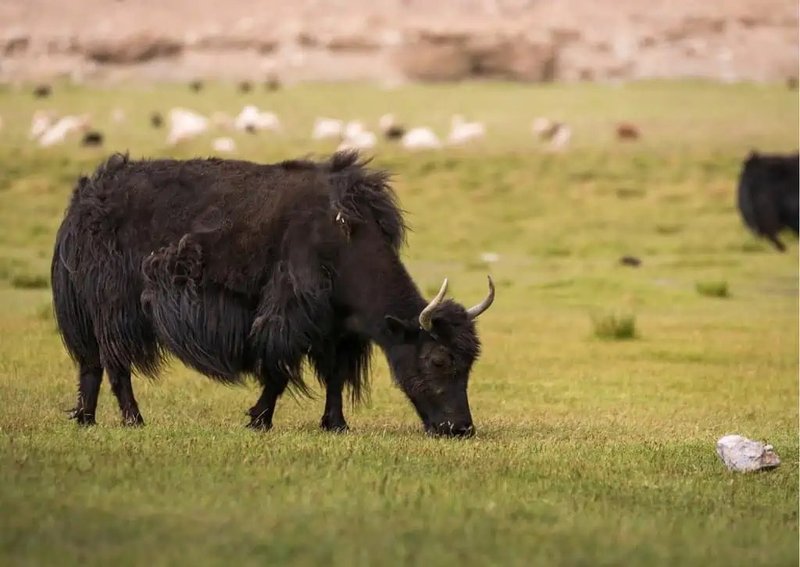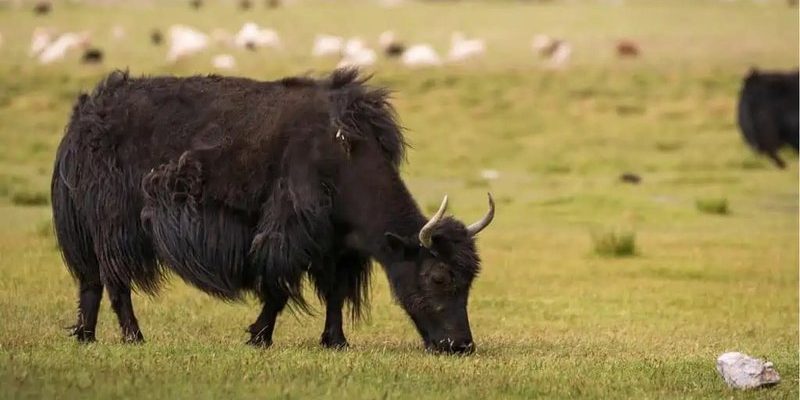
In terms of intelligence, yaks are often compared to other domesticated animals like cows or goats. While they might not be solving complex math problems, they have skills tailored to their environment. Their behavior reveals a lot about their social structures, communication, and how they interact with both their herd and the humans around them. So, if you’re curious about these amazing animals and their cognitive abilities, read on!
The Social Structure of Yaks
Yaks are inherently social animals, typically living in herds. Their **social structure** is fascinating and plays a big role in their cognitive abilities. Herd dynamics help yaks learn from each other and adapt to their environment. For instance, when one yak discovers a water source, the others often follow. This type of learning shows how they share knowledge within their community.
Interestingly, yaks recognize individual members of their herd. This means they can identify friends and even rivals. They communicate through various sounds—grunts, snorts, and bellows—indicating different emotions or alerts. It’s as if they have their own language! Their ability to recognize social cues suggests a level of intelligence that goes beyond mere survival instincts.
Moreover, when yaks are raised in the presence of humans, they can learn to respond to commands and adjust their behavior accordingly. This adaptability highlights their cognitive flexibility and the bond they can form with humans, offering a glimpse into their smart side.
Cognitive Skills: Problem Solving and Memory
You might be surprised to learn that yaks have impressive **problem-solving skills**. In their natural habitat, they face challenges like finding food in harsh conditions. Yaks are known to navigate rocky terrain and find the best grazing spots, showcasing their ability to remember the layout of their environment.
Their **memory** is quite remarkable too. Studies have shown that yaks can remember locations of food and water, vital for survival. When they are familiar with their surroundings, they seem to exhibit less stress and can thrive better. This ability to retain information is essential, especially in the wild where resources can be limited.
One great example of their problem-solving skills is when yaks come across obstacles like fences. They might try different strategies—like going around, jumping, or even nudging through—to find a way past the barrier. This resourcefulness not only shows intelligence but also adaptability to new situations.
Yaks have a unique way of communicating, and understanding their **vocalizations** can give us insight into their cognitive abilities. Each sound they make conveys different meanings depending on the situation. For instance, a low grunt might indicate contentment, while a series of loud bellows could signal distress or alertness to danger.
But it’s not just vocal sounds that yaks use to communicate! Body language plays a significant role too. The way a yak positions its head, tail, or even nostrils can express emotions like fear, aggression, or submission. Their ability to interpret these signals is crucial for living in a herd, where harmony and cooperation are key.
By observing and responding to these vocalizations and body cues, yaks demonstrate a form of social intelligence. They can decipher the emotional states of fellow herd members, fostering close relationships and ensuring a stable social environment.
In the wild, yaks exhibit remarkable **adaptive behaviors** that showcase their intelligence. For example, during harsh winters, they may change their grazing patterns and adapt their diets to survive. They often seek out higher altitudes where vegetation is more accessible, illustrating their ability to plan and strategize.
When it comes to coping with predators, yaks stick together in a tight circle to protect their young. This defensive formation highlights their awareness of threats and their capacity for collective problem-solving. By working as a team, they increase their chances of survival, showcasing both intelligence and social cooperation.
Additionally, yaks can adapt to life alongside humans. Their domestication has led them to develop behaviors that help them thrive in agricultural settings. They learn to navigate fields, react to farming equipment, and even respond to human commands, demonstrating their cognitive flexibility in adapting to new environments.
The relationship between yaks and humans dates back thousands of years, especially in regions like Tibet and Mongolia. In these cultures, yaks are not just livestock; they are deeply woven into the fabric of daily life. Their intelligence and ability to coexist with humans reflect a cultural significance beyond mere utility.
For instance, yaks are often trained to carry heavy loads across challenging terrains, showcasing their ability to learn and follow commands. This interaction introduces a symbiotic relationship where both humans and yaks benefit, highlighting their **cognitive capabilities**.
Moreover, yaks are essential for local economies. Their milk, meat, and wool are vital resources, but it’s their intelligence and adaptability that have allowed them to thrive in harsh environments. This mutual dependency demonstrates how their cognitive abilities have not only helped them survive but also contributed to human societies.
As climate change and habitat loss threaten yak populations, understanding their cognitive abilities becomes increasingly essential. Efforts to conserve yaks focus not just on preserving the species but also on recognizing their intelligence and value within ecosystems. Programs that educate local communities about yak behavior and intelligence can foster appreciation and encourage sustainable practices.
Additionally, researchers are exploring how yaks may adapt to changing environments, which can inform conservation strategies. By studying their behavior and learning capabilities, we can develop better methods for protecting both yaks and their habitats.
Conservation efforts also aim to promote the traditional knowledge of local herders, who understand the yaks’ behaviors deeply. This collaboration between science and tradition can optimize strategies that benefit both yaks and people, reinforcing the importance of their cognitive skills.
In conclusion, yaks are more than just sturdy animals of the mountains; they possess remarkable cognitive abilities and social behaviors. From their problem-solving skills to their complex communication, yaks have a lot to teach us about intelligence in the animal kingdom. Understanding their behavior is crucial not only for their preservation but also for appreciating the intricate relationships we share with the natural world. So next time you think about a yak, remember: they might not just be surviving; they’re thriving through their intelligence, just like us.

